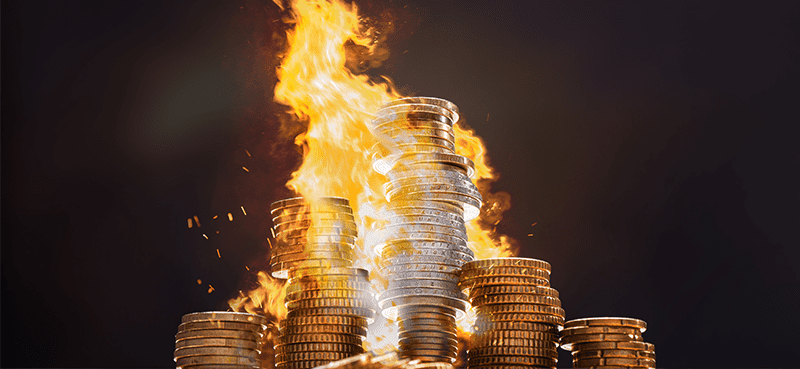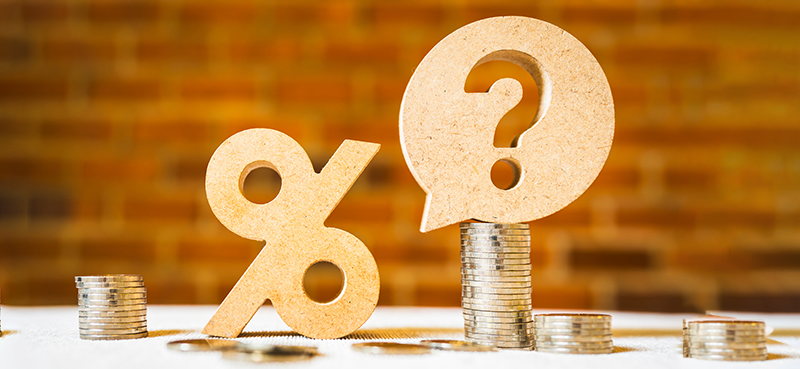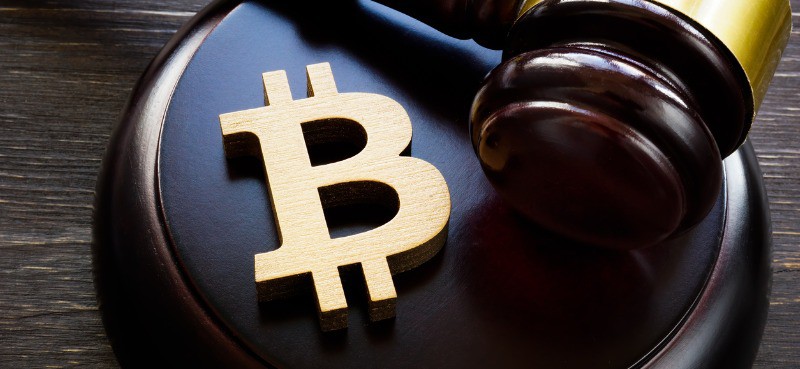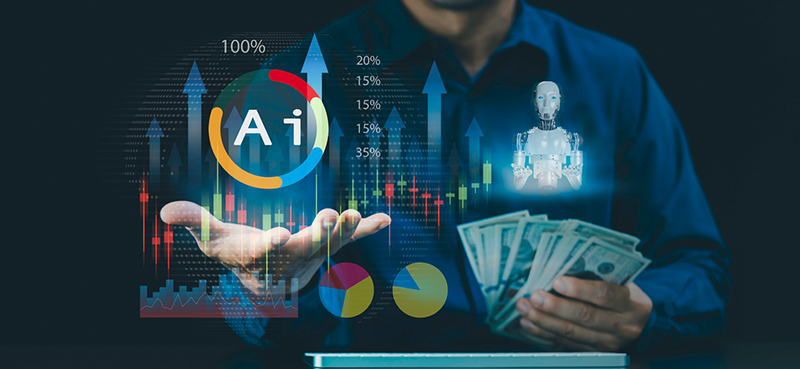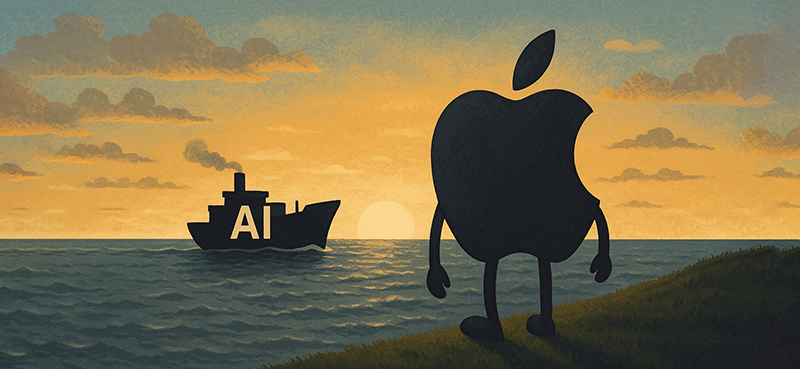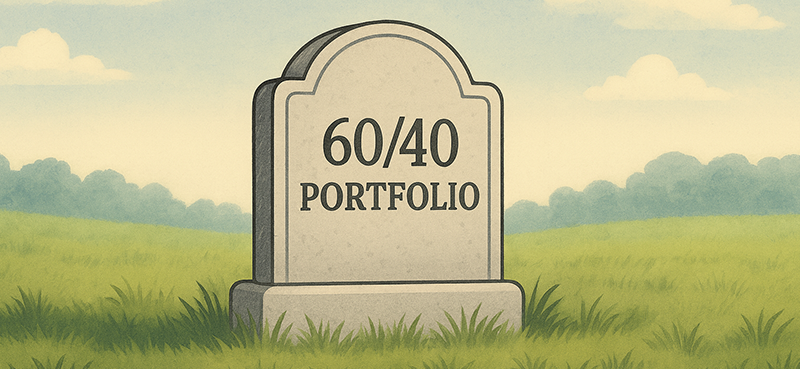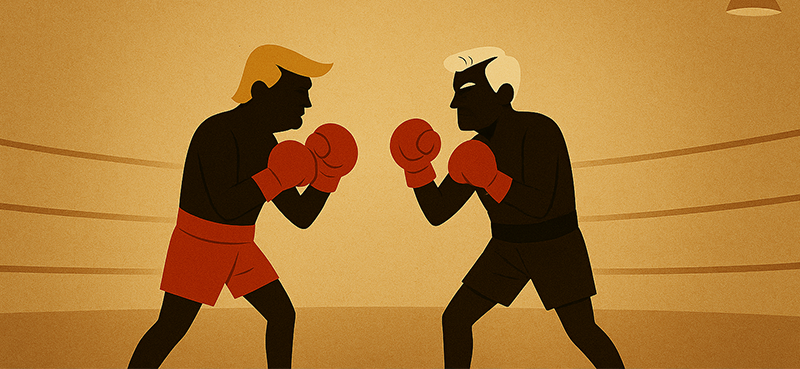Frank Curzio
Why the worst inflation is yet to come…
There’s a lot to unpack in today’s episode…
Volatility continues to plague the markets. I dig into the major uncertainties we’re currently facing… why every investor needs to pay attention to this week’s Fed meeting… why supply chain issues continue to impact earnings… and why oil and other commodities will keep rising for the near future.
Next, I break down why inflation is about to get worse… And the sector you can buy to make a killing as it does.
I close the show with a recap of the Fed’s (many) recent mistakes… and what it should do next.
- What’s creating mass market uncertainty [0:28]
- Does the Fed know what it’s doing? [8:45]
- Why supply chain issues are a guessing game [14:52]
- More details about inflation and oil [19:35]
- Why food prices are about to soar [22:37]
- The Fed is “talking out of its ass” [30:30]
- Don’t give up on this market yet [33:13]
Wall Street Unplugged | 888
Why the worst inflation is yet to come…
Announcer: Wall Street Unplugged looks beyond the regular headlines, heard on mainstream financial media to bring you unscripted interviews and breaking commentary, direct from Wall Street right to you on main street.
Frank Curzio: What’s going on out there? It’s Tuesday, May 3rd. I’m Frank Curzio, host of the Wall Street Unplugged podcast, where I break down the headlines and tell you what’s really moving these markets.
Frank Curzio: What an insane, insane market. Now, let me break it down for you. So, let’s go back to last Monday. Stocks fell 1.7%, pretty big move, before rallying late for a nice gain, which is weird. Then on Tuesday, the S&P 500 plunged 2.8% after some of the big tech names, FAANG names, missed earnings.
Frank Curzio: On Wednesday though, everything was okay. We were cool. S&P surged 1.6%. We were good. We were awesome, until the afternoon when stocks gave up nearly all of its gains. S&P 500 closed just up 0.2%.
Frank Curzio: On Thursday, again, great stuff. The S&P 500 rallies 2.5%, we’re out the woods. Everything’s all right.
Frank Curzio: Then on Friday, what happens? The S&P 500 absolutely tanks, 3.6%. The NASDAQ fell over 4% in one day, a significant, significant move.
Frank Curzio: Let’s go to this week. On Monday, we saw the S&P 500, and this is following that massive huge loss on Friday, fell 1.7%. Panic. Then the last hour of trading, rallying tremendously, massive buying comes in and the S&P 500 goes up 0.6%.
Frank Curzio: Guys, I’ve been doing this for a long time. These are absolutely insane moves. They happen during black swan events, where you’re looking at a credit crisis, looking at COVID. We have market conditions. We’re seeing a lot of risks in the marketplace, but this is getting insane.
Frank Curzio: As an investor, for me, I focus on individuals. That’s why you listen to this podcast, right? Forget the institutions. For individual investor, how are you not concerned with this? Even if you’re a long-term investor, some of the markets have gotten crushed, absolutely crushed over the past few months.
Frank Curzio: You may be wondering why? How do I gauge this? When do I know to come back in? If I stopped out of a few names? Is there more pain? Should I get out of the market? Right, you want to try to figure this out. We all do. Even professionals want to, but you’re wondering why we’re seeing the massive moves. Why are we seeing the uncertainty, back and forth, back and forth, where there’s no direction, but at the end of the month, there’s a direction, we just finished lower. But right when we seem like, “Hey, things are okay, we’re oversold. This is cool,” it just turns out to be temporary.
Frank Curzio: You may be wondering, “Why? Why Is it so volatile? Why?” You may be thinking “Well, the 10-year hit 3%. 3%.” Well, I don’t know. We hit these levels when? In 2018, 2014, it was selling above 3%, prior to 2011, you had been here before. You look at mortgage rates. “Wow, surge over 5%, 5.5%. The highest since 2010,” great headline, but we’ve had high mortgage rates for a long period of time. You know, pre-credit crisis.
Frank Curzio: People are blaming the war, Ukraine, new lockdowns in China, due to COVID, inflation out of control, the Fed tightening and reducing its balance sheet. While the major industries are below the 200 day moving average, which has never happened in history.
Frank Curzio: But you know what? Even that’s not the big story, when you think about it, because what we’ve done in the markets, at least since the credit crisis. We’ve always prepared for tough conditions. And when we see those tough conditions, we create a plan, we figure out how we can get through these messes, and invest accordingly. And the Fed used to do a great job at that. An awesome job. Just say what they were going to do in the future, so the markets could prepare, and that’s a big change of pace. We didn’t really see that Volcker, Greenspan, but since credit crisis, we saw it. The Fed’s very open, the governors all speak now, they all talk, right? We never saw that before, 10, 12 years before. Now they all talk, every one of them, different events and gets picked up all over the news services and financial media, but they do this so we don’t have any surprises, which is big.
Frank Curzio: However, today, the reason we’re seeing insane volatility, where we can’t gauge the direction of the market, we have no clue where the market’s heading. It’s the massive uncertainty surrounding these events. And uncertainty is absolutely horrible for equities. And we see this all the time. IBM transitioning for how many years into cloud data analytics? It took such a long time, but the uncertainty there, right? And IBM did nothing. It’s stock did nothing, kept going lower and lower and lower. So finally, it found a base, went higher and said, “Okay, they finally made that transition.” Yes. It took eight to 10 years or whatever. Ford seeing their stock fall because it’s evident they have no clue, absolutely no clue. And they’ll be able to produce EVs at scale. They’ll tell you “F Ford 150 is ready, no supply chain concerns”, remember they told us that 12 months ago, they’re easing. They’re not, they’re worse. That’s why you see in Ford and GM absolutely crash.
Frank Curzio: We see when a company gets sued for a vast amount of money, the stock remains stagnant, sometimes it goes lower, but once they settle, they actually settle and say, even if they lose, when they settle that, the stock will pop, because now there’s certainty. Now, you can predict. Now you can say, “Okay, here, we take this out, here’s the charge.” Here’s what they have to pay over the X amount of years. Now it’s back to business, their core business, how much it’s going to grow. And you could model for the company of where it’s going to go. And the more you see clearly, the more you see that, the easier it is to predict, and that’s what the markets love.
Frank Curzio: What about we see uncertainty within a merger. Sometimes it’s cool, a company emerges to another. If you own the company that’s getting bought, usually it’s good. But what about the company doing the buying, the acquire, sometimes you have to go through regulatory, justice department issues, especially if it’s a big deal. So it’ll be required to sell off current assets to make the deal go through. We saw this at AT&T, which I thought that deal was fantastic for them. They found a way, with direct TV. All this nonsense in these assets, they were able to put an extra 40 billion on their balance sheet, focused on the growth in 5G, and push streaming aside. It was a very good deal. The numbers are great, but it took what? A year? Well over a year? To get this deal done. And what happened to AT&T? It significantly underperformed the market over that timeframe, while everything else, and this is post COVID, right after, that started going a lot higher, but it was the uncertainty, the uncertainty, it’s a death of stocks. We hate uncertainty. We hate it.
Frank Curzio: And today it’s the most uncertain environment that I’ve seen, in close to my 30 year career. We even saw Paul Tudor Jones on TV, on CNBC, said he can’t think of a worse environment for stocks and bonds right now. While he reiterated how bullish he is on crypto. But here’s the guy that’s been doing close to 50 years, because it’s so difficult to predict the direction right now. We don’t know what’s going on. It’s based on certainty.
Frank Curzio: For example, a 10-year hit 3% yesterday, 3%. They made such a big, I thought they were going to put hats on, like they did with, every time the NASDAQ or the Dow hit a certain level. I thought they were going to put hats on, that it hit 3%, it was such a big deal. And you know who predicted that the 10-year was going 3%? Nobody, nobody, nobody, nobody, nobody predicted it. Goldman Sachs, and this is just February, couple months ago, predicted a 10 year would jump 2.25% in 2022. At the end of 2023, it would be a 2.45%. This was in February. This is how off they are. I’m just using Goldman Sachs example. They were all off. Now, Goldman Sachs predicting the 10-year to go to 2.9% in 2022. This was last month. We’re already at 3%. It is saying 3.19% at 2023.
Frank Curzio: And where do you think it’s going to be? Probably a lot higher than that. It’s already at 3%, already met its forecast in 2022, and it could decline from here and maybe they’d turn out to be right, but how wrong.
Frank Curzio: That’s a massive, massive miss, a massive miss. So this creates uncertainty, and the markets hate uncertainty. Look at the Fed, for close to 16 months from July, 2020 to November, 2021, the Fed told us, inflation will be transitory. It’s going to go away. It’s only temporary, smartest guys in the room. Got to come back to 2%. We might go a little bit above 2% for a little while, but it’s going to come back down. 16 months, they said this, inflation is eight and a half percent, last month. That’s the highest in 40 years, it’s still not slowing. Now the Fed changes mind force to aggressively raise rates, which by the way, still hasn’t done, the meeting this week, we’re expecting a 50 basis point hike on top of the 25 base point hike that he just did, but aggressively raise rates, they just really begun. And then, they’re going to be forced to shrink their balance sheet, which again, it still hasn’t done.
Frank Curzio: So, when the Fed finally raised rates in March to 0.5%, right, they raised it 0.5%. So, they raised it 25 basis points. It also increases forecast, and this is in March guys, for the number of expected rate hikes, from just three rate hikes to 2022 to seven, this was two months ago. Let’s calculate that, because at seven, if it’s a 25 base point hikes, because that’s what they’re counting, right? It’s not seven hikes, this isn’t going to be one hike, this is two hikes, except they’re going with 50 base point hikes this week, that’s going to bring the Fed funds rate from 0.5% to 2.25%, yet the 10-year is telling us that we need to hike rates to at least, at least, at least 3%. At 3%, that’s 10 hikes. What are you going to say tomorrow?
Frank Curzio: Again, we got this uncertainty and that’s why everyone’s looking forward to what Powell has to say the next few days. In fact, I’ve been doing this for a long time, I have no clue what he’s going to say. Is he going to try to be dovish again, like he was last quarter, which pushed the markets higher temporarily? You could say whatever you want, you could say, “Hey, we’re not going to aggressively raise.” You have to, aggressively raise, have to, but he tried to be dovish last quarter, which is impossible.
Frank Curzio: Again, you need to aggressively raise rates here. We all know it. He tried that approach. He tried that approach and it was funny, he listened to the experts, the so-called experts on TV, tell you, “I don’t think he’s going to be that… He’s going to be dovish. He’s not going to be that hawkish,” which is funny, like he has a choice, but he tried that approach in March, and what happened? The next few days, almost every Fed governor came out and said, “You’re crazy,” and then what did he do? He did it about face, on Monday after raising rates Wednesday, a few days later saying, “No, you know what? We’re going to have to aggressively raise rates.” He changed his mind in four days.
Frank Curzio: Uncertainty. How does the Fed plan on shrinking its $9 trillion balance sheet? Well, Powell came out and said, “You know what? We’re going to sell a hundred billion in bonds every month.” Well, let’s do the math on that, because that’s going to bring us to 7.8 trillion in 12 months, which doesn’t even make a dent. So, are you going to update that forecast this week? I don’t know. Nobody knows.
Frank Curzio: And for the past 12 years, again, since the credit crisis, the Fed is always telling us what they are going to do. “Here’s what we’re going to do. Here’s what to expect, this way you don’t have these big market moves and nobody’s surprised.” And holy cow, that’s why you never see the Fed come out of nowhere and just raise much more than expected. Maybe they do that tomorrow, raise 75 basis points, which they should. They should raise by a point, get it out of the way. Let the markets fall. But you’ll provide certainty because you’re getting closer to the point that you have to be, instead of trying to sugarcoat it, because you was so fucking wrong for the past 16 months.
Frank Curzio: It’s like a Band-Aid. Do you want to take it off really slow and be in pain? Or rip it off? Rip it off. We all know where it has to be. We all know. Even Powell knows, and you’re using the word “Hope,” that’s uncertainty. How about war? When will it end? Russia stopped gas supply to Europe, which will send prices surging again, and high energy prices filters in to every economy across the planet. Every single person, every consumer. But do we know when this war will end? We didn’t think it would last this long. I thought Russia was going to go in there, kick ass, and say, “Okay, everything’s cool,” and whatever the consequence of that or whatever they’re going to do after that or who they’re going to take, whatever, we thought that this war would end by now, it’s not even close. More uncertainty.
Frank Curzio: How about recession talk? Are we heading to recession? Powell says, “No, you don’t got to worry yet. No way.” And what do we see yesterday? Roger Ferguson, former vice chairman at the Fed said yesterday that a recession is inevitable. Totally contradicting Powell, not to mention how many Fed governors said the same. And he was saying, Powell, he must raise rates quicker or the Fed’s going to lose credibility. You lost credibility already. Holy shit.
Frank Curzio: More uncertainty. What are you going to do? Are we heading to recession? Are we not? We’re hearing from the same Fed, what people within the Fed, saying it’s guaranteed, but yet the leader of Fed is saying, “No, you don’t have to worry about it yet.” China’s still on lockdown. When will that ease? Plus China’s planning to stimulate its economy, which is the growth engine of the world. Hey, we are going to stimulate. We’re going to stimulate our economy. We’re going to become stronger than every country in the world. We’re going to lower taxes, a massive increase in infrastructure spend, that was easy to do because they were seeing inflation, moderate a little bit, but delays inflation numbers over the past two months, were much higher than expected, than estimates. So, are you going to do what we did? Inflation going higher, and you’re simulating the economy? Because look at where we are right now. And we’re dependent on China for that growth. And that stimulus, how’s it going to happen? How they going to manage that?
Frank Curzio: In recent lockdowns, they’re creating another wave of supply chain issues. Again, more uncertainty. Looking at earnings, you want to see those supply chain issues, look at earnings, almost every single company, this earning season, it’s about 65% that reported, almost every single company, is wanting of supply chain issues. But how do you pick which ones can handle it? And which ones can’t? Because that’s the question. Because GE got wrecked on supply chain issues, Fords getting wrecked on supply chain issues. Rockwell Automation got wrecked, fell sharply in supply chain issues, that impacted earnings. You have 3M as well, right? Manufacturing, so 3MG, but then you’re looking at Honeywell and Honeywell reported great numbers, Onsemi was able to pass on these costs to their consumers. They report a record earnings, record sales, record margins, Apple wanted supply issues, but again, they were able to beat their numbers and guidance. So, these are companies that got it right, but it’s not that easy to see who gets it right, and who gets it wrong.
Frank Curzio: Take the companies in manufacturing alone, and Onsemis, where supply chain issues, they all have them, but how do we really pick which one is going to be impacted the most? Because if you look at Honeywell and you can say, “Well, they’re a winner right now,” Honeywell reported weak earnings and lower their guidance last quarter, due to supply chain issues.
Frank Curzio: Then we had GM and 3M, or GE and 3M, just report. So, these companies just reported and they bombed their quarters. So, you’re sitting there at Honeywell, if you’re a shareholder of Honeywell, you’re selling your stock. You’re like, “Holy shit,” they won last time, now their two competitors, both warned and seeing significant supply chain concerns. A lot of these guys sell the same stuff and now you’re like, “Okay, I got to get the hell out of Honeywell.” And what does Honeywell do? They blow out the numbers. They blow out the numbers. How do you predict that? How do you predict that in anything? Other than flipping a coin, how do you predict that? How do you predict Honeywell blowing out the estimates under those conditions? You won last time, your competitors bomb their quarters, just ahead of you, and then you report blow out earnings, and raise guidance.
Frank Curzio: You could see why we’re seeing these massive moves, when nobody knows where it’s going. It’s basically a guessing game. If I pick the right company during earnings season, it’s going to go off 5% after earnings and you’re going to be like, “Yeah, all right,” and then what happens? Then you have that 5% gain, slowly sells off. Expedia reported great earnings after the bells up 10, 12%, they’d opened today up 2%, 3%, UPS reported great earnings, and that stock just fell. So, even the companies that are reporting great earnings, you’re seeing sell offs later on, along with the market, or the alternative is, you picked the wrong company, holy shit.
Frank Curzio: Chegg down 40%, Netflix down 40%, you lose 20% a day if they bomb the quarter. So, how do you pick and choose? Because no one’s immune to this. No one’s kicking ass. There’s stocks all over the place, some of them down 70%, 6%, 50%. And some are up maybe 10%, 15%. The Proctor and gamble or… Clorox is down… Kroger is up. How do you pick? It’s so difficult.
Frank Curzio: We saw the same thing at a major tech companies, right? The FAANG names always went up in tandem. Yeah. Some of them would take a break from others… You look at the numbers now, where Amazon, Netflix were terrible. Facebook was decent, pop from oversold levels, but they weren’t great numbers. It wasn’t great guidance. They could report revenues declined year over year, this year. So, they weren’t great. Google, Apple, Microsoft, amazing numbers, even separation there, among FAANG names, which you haven’t seen in 12 years, before, pretty much November. And most of these tech companies trade on the NASDAQ, including those semis that I mentioned.
Frank Curzio: How difficult has this been? Here’s the math. As of yesterday, 45% of stocks at the NASDAQ are down 50% plus. 22% of stocks are down 75% plus. And more than 5% of stocks in the NASDAQ are down more than 90%. That’s the market we’re in right now. And why we’re in it, is because nobody knows what the fuck is going on right now, or how to predict it. It’s almost impossible. That’s why we’re seeing these major swings just from Monday. How I started this podcast, up 100%, then finish the day down. Then down 2.5%, then up 3% next day, then down 4% the next day. How do you invest in stuff like this? These are algorithm’s going crazy. But as an individual investor, how do you invest in this shit? It’s hard. I feel you. We’ve stopped out of stocks, it’s difficult.
Frank Curzio: But now, let’s talk about inflation. How we’re assuming that it’s going to moderate. Inflation’s moderating, which is good. It’s not going higher. We’re seeing it, it’s topping out, that’s the big theme. That was a big theme a couple weeks ago, right? With core CPI coming in a little bit lower than expected. Well, you know what? Airfares. Airfares are up 39% year-over-year, and hotel rooms are up 52% year-over-year, that’s as of this month. Gasoline prices still in their record highs, everything is still surging in price. Everything, yet economists and Powell, will see inflation easing. Why is that? Well again, the thesis based on last month’s consumer price index, CPI, which came in a little bit lower than expected. Which by the way, a little lower than expected, the CPI was up 8.5%, the highest inflation in 40 years, but it’s moderate. It’s what a joke.
Frank Curzio: So the core came in lower than expected, and that’s great. That’s what we need to see. Finally breaking that trend of higher, higher, higher, just stop a little bit. Come a little bit lower. That’s fine. But let’s go over what the CPI is. Okay? Because CPI measures this basket of price. The core is the same thing, except it excludes what two components? Food and energy. Because they’re really volatile, food and energy. Let’s take food and energy out there, this way it looks like we have no inflation, like we don’t pay for food and energy.
Frank Curzio: Okay. Let’s break down those markets really quick. I don’t know if you saw the interview in CNBC, with COBP, it was awesome. Breaking down the numbers. Tell us why oil price are likely going a lot higher. And again, he could be talking his book, but, if you’re looking at the details and the statistics and the facts and the data, we have 1 million barrels of oil from Russia, offline. More is coming as sanctions are really going to start kicking down Russia, and what’s Russia about to do? They’re about to cut the supply of gas to Europe. What do you think that’s going to do to the prices? And we have a green agenda in our country, where oil drilling is restricted. It’s being restricted. Regardless of federal lands or… It’s being restricted. They can’t drill as fast as they want to drill, and pull as much oil from the ground as they want. It’s being restricted.
Frank Curzio: Okay. So, forget about the idea of producing more oil and filtering these profits into green energy and purchasing carbon credits, right? That’s not good enough for our leftist politicians who would rather see more Americans homeless and tens of millions of others struggle, paying higher prices at the pump, they’d rather see that. Than produce more oil, these companies generate more profits, and then you can put all that into green energy. This is a better solution according to them.
Frank Curzio: But if you look at it, oil’s not coming down anytime soon. And I thought it would be topping out. But when you look at the details, you look at Russia, cutting the gas supply, you look at that war going on much longer than expected, and there’s a huge bid under energy right now. And when you look at Russia, do you think that war is going to end anytime soon? The fighting’s getting worse, as it’s going along. So in short, oil prices, are you expecting them to come down? No, but that’s going to be excluded from the CPI.
Frank Curzio: Now let’s talk about food. Please pay attention to this segment because it will make you a lot, a lot of money. Because there’s the other component of the CPI, that’s excluded from the core, get ready to be blown away.
Frank Curzio: So we have a massive shortage, such an overused word, because I try to use a bigger word than that. Massive, massive, massive. I’ll say it three times, shortage of fertilizer right now. Which why I’m recommending Mosaic, which we’re up a lot on, even though the stock’s down 25% from its highs, it came down a little bit from its earnings report, but I’d be buying it, hand over fist right now. Buy any fertilizer company right now, why am I saying that? Fertilizer companies use three key nutrients. It’s nitrogen, phosphorus and potassium. They also use ammonia based nutrients since they could be mass produced. This helps farmers increase their crop yields. What does that mean?
Frank Curzio: The increased production of food while keeping their costs constant. They’ve been doing this over the past 50 years. The natural gas is a major input to produce all these chemicals, where are natural gas prices? They’ve skyrocketed, again, it’s not going to change anytime soon, unless the war in Russia suddenly ends and Russia and Europe are suddenly getting along, which we don’t see, but none of the other European nations are getting along. Don’t see it. So, it’s not going to ease anytime soon. You would think that’s the largest factor, energy prices. And you could say, “Well, it’s cyclical. It’ll come back down,” that’s the least concern. That’s the least problem you need to worry about, when it comes to fertilizer.
Frank Curzio: Because Europe and the US have massive sanctions against Russia, which we know about, but they also have sanction against Belarus, who’s an ally to Russia. Now Russia counts for 20% of the world’s nitrogen, phosphate and potash exports. And since the start of the war, these exports have declined considerably, which makes sense. The Belarus, one of large producers of potash, along with Russia. So together, we’re talking about 40% of the world’s potash supply being disrupted. That’s what’s happening right now, but it gets even better, because now we have to throw in China.
Frank Curzio: So China, well they’re the largest phosphate provider in the world, and what is China doing right now? The country our politicians support the most, to where we’re not allowed to say anything negative against China, or we’re going to get thrown off social media, not Twitter anymore, but all the other social media channels. So what’s China doing? You guessed it. They’re limiting the supply, to the world. As the phosphate they produce, what are they doing with it? They’re stockpiling it, which is brilliant. A brilliant move in their part.
Frank Curzio: Forget energy, which China doesn’t have any of, other than coal, which their mass producing, right? Our US politicians don’t care, as if coal does not destroy the planet, right? Our coal destroy the planet, only the coal that’s produced in the US does, right? So every place else, it’s okay to produce coal. But in the US, it destroys our planet. We got to get rid of it, but everybody else could produce it. It’s fine. It’s not going to destroy the planet if they produce it. Right? But China is actually brilliant. Because they’ll tell you about food and they’re controlling the price of food right now, which higher prices, can destroy developed economies, which in turn, makes China incredibly powerful. It also creates a huge bargaining chip to get countries on your side, when you go after Taiwan, which eventually they will. That’s a bargaining chip Russia did not have before, invading Ukraine. Couldn’t get any countries on its side. It’s different now.
Frank Curzio: Looking at China, again, they’re going to learn from that mistake. This is a big bargaining tool. So you have Russia, Belarus, China, the three of the world’s largest fertilized producers, all restricted production. That’s why we’re seeing fertilizer prices absolutely surge.
Frank Curzio: Now, when you look at the farmers, it’s not like they could pass off these costs to consumers. What do they do instead? They use less fertilizer because it costs so much. This in term, decreases their crop yields, which reduces the amount of food available for the world to eat, and now we have a shortage of food all over the world, which again is resulting in food prices skyrocketing.
Frank Curzio: How much? Well in February, the world food costs soared to an all-time high, all-time high, right? We’re used to that, with prices, all-time high in February, one month later in March, this is the latest reading. So, April’s going to come out next week, this is the latest reading in March. Prices rose another 13%, not year-over-year, month-over-month, they rose 13%. Wait until you see them come out this month. More importantly, wait until you see them come out over the next six months. Because if you’re looking at prices, and higher food prices, this sucks for us, right? There’s higher food prices, we go out to eat, we all eat right? We pay much higher prices in the future, on food. That’s bad. But think about third world countries, because when we pay higher prices and we’re pissed off, they’re not going to have access to food. They can’t afford it.
Frank Curzio: You look at fertilizer prices, actually tripled. And how bad is this problem right now, today, right now, we’re not talking about the future. We’re talking about right now, proves agriculture industry is facing a deficit of 180,000 metric tons of fertilizer. It’s a huge output in growing rice, potatoes and corn. I know, probably means nothing to you, but they’re predicting a 40% decline in supply, due to higher fertilizer prices, a 40% decline in rice, potatoes and corn, a 40% decline. The international rice research Institute, that’s really an organization.
Frank Curzio: The crop yields could drop 10% next season, meaning there’ll be 36 million fewer tons of rice. Let’s put that in perspective, enough to feed 500 million people. Sub-Saharan Africa is predicting a 30 million ton decrease in food production. That’s enough to feed a hundred million people. In Brazil, the world’s biggest soybean producer, a 20% cut in potash could bring a 14% drop in yields. Costa Rica, coffee represented 1200 small coffee producers, sees output falling as much as 15% next year, at the farmer’s missed even one third of normal application, which they will. These are the problems we’re facing right now when it comes to our food. Now, what about the future? Because that’s where things get interesting, because they’re telling us that inflation’s going to moderate. “It’s going to moderate. We’re going to be fine. It’s going to slow, here it is.”
Frank Curzio: So right now, farmers are significantly decreasing fertilizer usage for current crops, for crops that won’t make their way to the shelves for months, right? It takes time to grow, then pick, then ship. We all know that. So the inflation numbers we’re seeing right now are absolutely nothing, especially in the food category. And we talked about energy, but the food categories, absolutely nothing to where, food prices will be over the next three to six months, because farmers are using less fertilizer for these current crops, that result in lower crop yields or much less food hitting the market. So fewer supply, coupled with massive demand, economics, 101 and prices for food. You think they’re high now? Holy shit. That’s why you should buy a fertilizer company. Buy any fertilizer company.
Frank Curzio: There’s prices of food, that’s the next crisis. This is going to be one of the, if not the biggest food crisis we’ve seen in history, of the world, that’s how much prices are going to go higher. That’s how crazy this is. China knows what they’re doing. Russia knows what they’re… They know what they’re doing. They’re controlling the food supply. They know, because higher prices are going to kill everybody. These are costs and even energy, that are directly tied to the consumer. But yet, our wonderful government and Fed exclude this from their inflation figures, like everything’s going to get better, because the core CPI came down, so we could see the core CPI come down. But inflation for these two components alone, could go up 15% from here, which we are going to feel directly. So while the Fed’s bullshitting you, saying, “Oh well it’s moderating and everything’s cool.” You’re going to be paying even higher prices for energy and much, much, much higher prices for food.
Frank Curzio: And think about that for a minute.
Frank Curzio: Because the Fed is going to be talking out of its ass, what over the next couple days, like it always does, because they should have been raising rates over a year ago to control inflation, where all asset prices surge to record highs, this was a year ago, record highs, earnings, home prices, household wealth, cars, almost every single asset, is at all the time highs and yet, continue to print trillions in money. Didn’t matter. You, me, every American, every person on this planet, that eats, drives a car, uses any type of energy to heat or cool their homes, is going to see a massive increase in the cost of living, as food and energy prices are not going to lower anytime soon, but again, this will be excluded.
Frank Curzio: So, if you’re wondering why you’re seeing these huge market swings, it’s because of the uncertainty around these events where we can’t plan. We can’t say, “Okay, here’s the top, here’s where the rates going for the 10-year.” 3.3%, nobody’s predicting where we are. We’re in uncharted territory right now. The predictions right now are so far out there, everybody’s catching up, even at Wall Street firms. It’s almost like all the Wall Street firms are predicting, a company earns a dollar a share and they come in at 25 cents a share and you’re like, “Holy shit. How did that happen?” Well, you’re not updating your estimates. We’re so far behind the curve to the point where even the analysts and the smartest people in the room, really don’t know what’s going on because, we don’t know what the Fed’s going to do.
Frank Curzio: Especially when it comes to inflation. We don’t know about the war. We don’t know what Russia is going to do. Are they really going to shut off the gas supply? It’s going to hurt them, but holy shit, where the hell are gas prices going? Where do we see energy prices going?
Frank Curzio: But that’s why we’re seeing these massive market swings, where we’re not able to predict what’s going to happen over the next six to 12 months. It’s hard to find the positive catalyst. See the war’s going to end, inflation’s going to moderate. The Fed’s going to raise by this, we don’t even know how much the Fed plans on raising. They’re saying one thing and we know it has to be another… Which is crazy.
Frank Curzio: And what’s that resulting? These massive swings. Despite the massive volatility we’re seeing on a daily basis, what happens to stocks? Going up and down, they’re eventually ending up closing the month lower. That’s what they did five of the past six months, including April within NASDAQ, had its worst performing month since 2008, the credit crisis.
Frank Curzio: But that’s what we’re seeing right now. I know… It’s crazy. And it’s negative, and I sell financial newsletters for our company and I get it, it’s probably not good that I’m telling you this. Now, I’m going to give you both sides of the story. Because it is a little bit of good news.
Frank Curzio: The market is down considerably. I just went over the NASDAQ numbers, considerably in a very short time, in a very short time, considering there wasn’t this black swan event, that took the mark down 30% forward. This is just gradually coming lower every month, coming lower, lower, lower, lower as we de-leverage and more money comes out of the system.
Frank Curzio: But a lot of this is being factored in, when you see in NASDAQ, somebody sucks down 40, 50%. A lot of it’s being factored in. You look at earnings and sales and projector grow, just over 10% this year. That’s pretty high, given the talks of recession and massive tightening, something we don’t see. That’s pretty strong earnings growth. Net profit margins are over 12%. They declined a little bit. The last two months off of record highs. But 12% is still a percent more than a five-year average. That’s great for corporations. That’s great for companies. That means their profits are still strong. Despite their stocks being down 30, 40%, that’s positive.
Frank Curzio: The 12-month forward PE, remember it being 23, 24, that was okay, and went straight to zero. Now they’re expecting to go a lot higher. The forward PE is just 18 right now. It’s below the five-year average. So, we’re getting to levels where we’re seeing decent earnings growth, and cheap stocks. We’re not just seeing the cheap stocks and value, remember you can buy cheap stocks that are going to go lower and lower. They get cheaper and cheaper and cheaper. You need some kind of growth catalyst, although you’re not going to go anywhere. Well, we’re seeing growth in some of these markets. We’re seeing some companies actually able to pass on these higher costs to consumers, restaurants, semiconductors, manufacturing, there’s winners and losers in all these industries. Even in the FAANG names, winners and losers, there used to be all winners.
Frank Curzio: Now you’re seeing companies adjusting. So, they’re reporting strong earnings. Their stocks are cheaper, because they’ve come down a lot. That’s a pretty good sign. Okay? So, it’s not all negative. What we need is fucking certainty. We need the Fed to come out, raised by a point, the market’s going to go down 4%, 5%. And then the next day, it’ll probably go 3%. You know why? Because the Fed is closer to its goal. And as closer you get, that certainty saying, “Okay, we’re at the point, where now we can start looking at stocks,” we don’t know. You’re trying to play the game where you were so wrong.
Frank Curzio: Just admit you’re wrong. Admit you’re wrong. Start from scratch. That’s the playbook. I know it’s not the playbook, especially, these are politics, never admit you’re fucking wrong, ever, ever, you’re never wrong. Never go back on what you say ever, right? That’s the playbook, always say positive things, never talk negative. That’s the marketing playbook. Throw that out. If you want this market to go higher, be aggressive, raise rates, because that’s going to provide more certainty that you’re closer to the goal.
Frank Curzio: When you are going to raise 25 basis points. Now, you’ve projected 50 basis points. There’s going to be 50 basis points, go 75, go a point, get it out of the way. We need some kind of certainty. We need inflation to actually moderate across the board. We need that. We need some certainty to get more investors back into this market. And that’s one of the things you’re seeing with something I track, which I showed in a lot of my newsletters. Bank of America, inflows, outflows, money’s been pouring out. You’re starting to see, money push into the market at these levels in certain sectors, finally. And you’re looking at earnings, pretty strong for 10 of the 12 major sectors within the S&P 500. And a lot of these have margins that are growing. So, there are positives there. We’re down, but we need some kind of floor, something that we can say, “Okay, I see what’s going to happen in three to six months, the Fed’s going to stop raising rates.”
Frank Curzio: That’s a positive, we don’t know. Based on your projection of what you’re saying, you’re going to do. It’s going to take 18 months. That’s too long. You’re going to reduce the balance sheet. Just do it. Do it by more than a hundred million, much more than that. Because it’s not going to make a dent. Again, things that you’re doing, it’s not making a dent because you’re hoping and praying that inflation comes down. I just showed you how, when you’re looking at oil, and you’re looking at food, inflation’s not coming down anytime soon. It’s not.
Frank Curzio: So, we need a playbook where we can provide certainty. When we have that, that’s when you’re going to have the confidence where people are going to come back in the market instead of picking and choosing like a Honeywell. That one last quarter, it’s two biggest competitors, warn this quarter, report a horrible earning, so you’re owning Honeywells saying, “Okay, maybe they’ll get this right,” now you’re selling it. Because you’re like, “Wow, that competitors just terrible.” And then come out and report great earnings. You don’t know what the hell’s going on. We don’t know. You need certainty in this market, when you have that, that’s going to be the opportunity to really get aggressively and pick away at a lot of these names that are down 40, 50, even 70%.
Frank Curzio: Now, I’ll get lots of questions off of this podcast. Feel free to email frank@curzioresearch.com. That’s frank@curzioresearch.com.
Frank Curzio: That’s it for me, again, positive and negatives here. Always going to be truthful with you guys. I’m here for you. I know the market is difficult right now, but emails, I’m here, questions, comments, frank@curzioresearch.com, and I’ll see you guys tomorrow with Dan. Take care.
Announcer: Wall Street Unplugged is produced by Curzio Research, one of the most respected financial media companies in the industry. The information presented on Wall Street Unplugged is the opinion of its host and guests. You should not base your investment decision solely on this broadcast. Remember, it’s your money and your responsibility.


